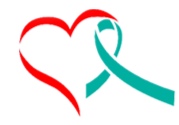If you want to join in our fight, become a volunteer!
If you’re ready to make steps in your healing process, we can help you get started.
Call us at (336) 228-0813
What is Sexual Assault?
Any sexual act that happens without clear, coherent, and sober consent is considered sexual assault. Sexual assault is a term for many forms of abuse and includes
Rape or attempted rape, including acquaintance, intimate partner, and marital rape
Unwanted sexual touching
Forced performance of sexual acts (oral sex or penetration of the offender’s body)
Sexual exploitation or trafficking
All forms of sexual violence are very serious and can happen to anyone, regardless of gender, race, age, or other defining characteristics. If you have experienced, or are experiencing, any of these behaviors, or behaviors that are similar to, the behaviors mentioned above, report the crime or get help immediately.
Signs
It can be difficult for a victim of sexual violence to come forward and seek help. Being able to recognize the warning signs of sexual assault and abusive relationships can be crucial to changing—and, in some cases, saving—someone’s life.
Signs present themselves differently in everyone and vary depending on age. To learn more about warning signs by age group, visit RAINN’s website but these are some common signs:
Visible injuries
Bruising
Bleeding from the genitals or anus
Broken or dislocated bones
Social withdrawal
Fear or avoidance of an individual
Developing fear of people or places
Changing eating habits
Child Sexual Abuse
Child sexual abuse refers to sexual activity with a minor. Child sexual abuse includes both physical and non-physical sexual activity with a child.
Examples of physical activities
Touching of genitals or private parts for sexual pleasure
Forcing a child to touch someone else’s genitalia
Promoting sexual role-play
Penetrating the mouth, anus, or genitalia for sexual gratification
Examples of non-physical activities
Showing a minor pornography
Asking a child to engage in watching or hearing sexual acts take place
Exposing adult genitalia to a child for sexual gratification
Watching a child unclothe or use the restroom for sexual gratification
Making or downloading child pornography
Signs
Children are even less likely to tell an adult. Although these potential red flags may present themselves regardless of a whether or not a child has been abused, they should be taken seriously and you should consult a medical professional or certified organization:
Acting out in a sexual manner
Change in sleeping pattern or increased amount of nightmares
Withdrawing or attaching more
Shifting moods, temper, and personality
Reversing age appropriate behavior (e.g. acting younger, wetting their bed, getting lower grades than usual, and etc.)
Developing fear of people or places
Changing eating habits
Using overly sexualized behavior and sexual language
Developing unexplained bruises
Bleeding from and discoloration around the genitals or anus
Avoiding alone-time with a specific individual
Sexual violence, can happen anywhere and to anyone. Do not ignore warning signs based off of someone’s physical appearance or situation.
Effects
The effects of sexual violence, regardless of age can be visible and/or physical. These effects can also be long-lasting and life-threatening. Sexual violence can have both physical and mental effects. Although these symptoms can be caused by a number of things, and are not the only ones that may occur as a result of sexual violence, if you or someone you know are experiencing these effects and are a survivor of sexual violence, seek help now:
Physical effects
Self harm
Unexplained bruising
Broken or dislocated bones
Pregnancy
STIs
Chronic Fatigue
Insomnia
Mental effects
Post traumatic stress disorder
Anxiety
Paranoia
Eating disorders
Depression
Suicide
Dissociation
Shock
Loss of temper and control
Mistrust
Addiction
How to Prevent Sexual Violence?
Sexual assault is preventable! We are working hard in the fight to eliminate sexual violence but we aren’t enough.
Know what consent is
Consent is an agreement between individuals engaging in sexual activities. It does not have to be verbal but both parties must agree. An individual can withdraw consent at anytime. Learn more about consent through our resources.
There are more forms of sexual violence that exist. It is important to know that sexual assault and other forms of sexual violence can be prevented. CrossRoads takes steps to bring awareness through community education.
For more resources about what sexual assault is, visit the organizations below!
National Sexual Violence Resource Center
The United States Department of Justice
Marshall University, for information about college students
